Zeta Kachri: ‘void exhibit(AAC), Arup’s Phase 2 Gallery, London, UK.
"Parasitic architecture allows the creation of flexible structures that feed off existing infrastructure offering solid answers to the problem of structural density of cities and the need of temporary accommodations. Additionally, modular systems potentially provide forms with great complexity out of simplicity. This project investigates the evolution of self‐sustained parasitic structures that evolve by creating aggregation forms well adapted to their hosts."


Evolo Project: Urban Parasite, by Paul Tse
http://www.evolo.us/architecture/urban-parasite-creates-new-types-of-habitation-for-seoul-paul-tse/
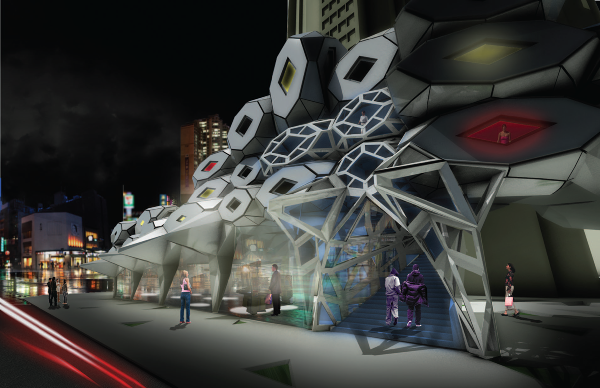
"Parasitic architecture allows the creation of flexible structures that feed off existing infrastructure offering solid answers to the problem of structural density of cities and the need of temporary accommodations. Additionally, modular systems potentially provide forms with great complexity out of simplicity. This project investigates the evolution of self‐sustained parasitic structures that evolve by creating aggregation forms well adapted to their hosts."

Evolo Project: Urban Parasite, by Paul Tse
http://www.evolo.us/architecture/urban-parasite-creates-new-types-of-habitation-for-seoul-paul-tse/

Designed as a direct counter proposal to Renzo Piano’s New Whitney Museum “Box” this studio, run by Lise Anne Couture or Asymptote while visiting at SCIARC, encouraged students to explore the varied and diverse work of the America artists who may have their work displayed in the museum itself. Highlighting the struggle to reconcile to big box museum with more intricate, detailed, and formal architectural design approaches, the studio began with simple formal exercises meant to explore possible techniques for the dissolution and opening up of the traditional box museum with aperture, structural expression, and integration of color.
In particular “UNCAGED” draws from the work of artist and sculptor Matthew Ritchie. His use of color and explosive modular sculptures which tend to take over the museum space with reckless abandon and parasitic division. “UNCAGED” latches onto the site at the south end of the Highline (Diller + Scofidio + Renfro). The museum’s sprawling appendages are accessible from multiple points of entry; a move geared to intentionally dissolve the institutional grand museum entrance. The interior spaces work much like a three dimensional maze providing views from level to level, without necessarily illustrating a clear notion of how to get from one place to another. One may visit the museum several times always entering at a new level or walking a new path. The coloration and texture further alienate the museum from it’s dreary setting and punctuate the location and function as a commentary on the clean white modernist exterior of some other “New Museums” in New York City.






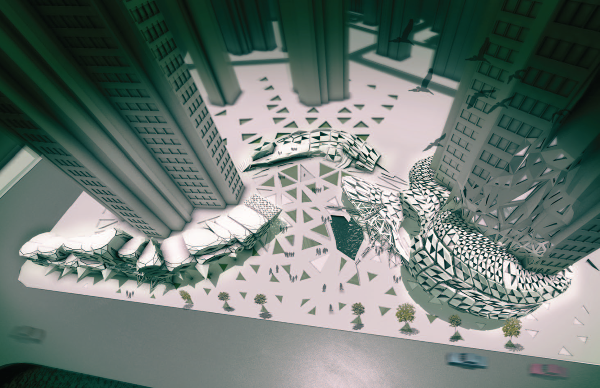
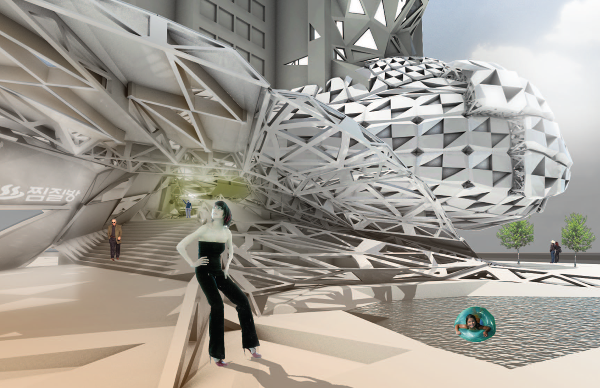
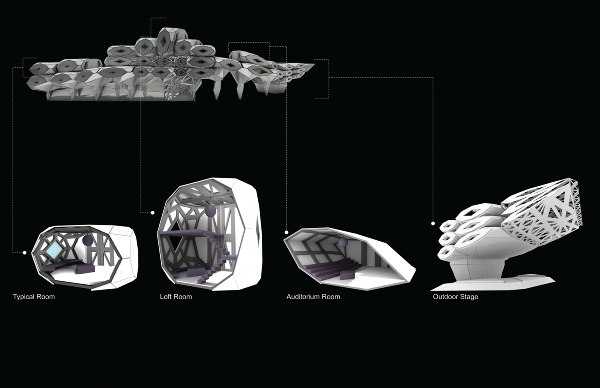
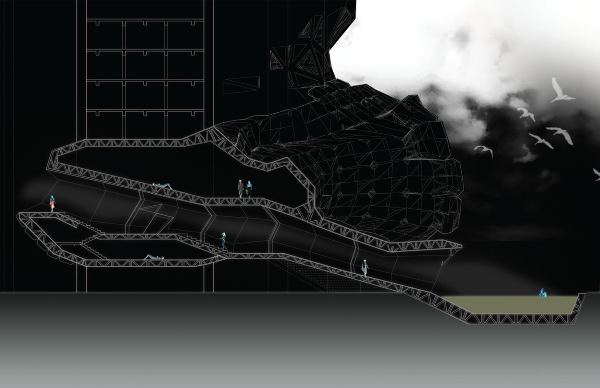
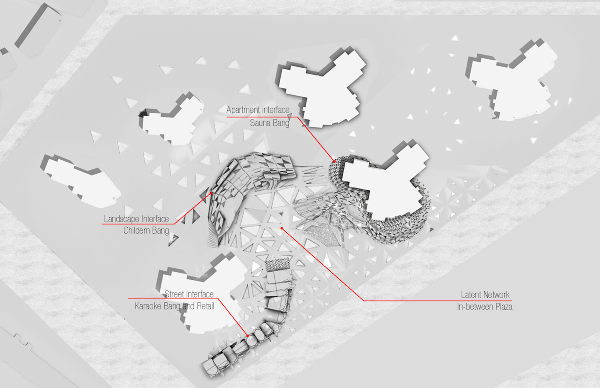
No comments:
Post a Comment